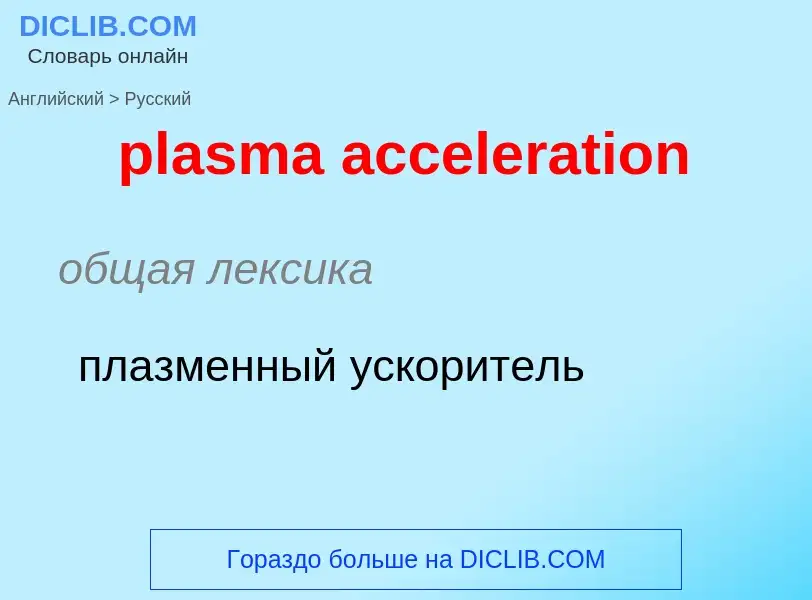Translation and analysis of words by ChatGPT artificial intelligence
On this page you can get a detailed analysis of a word or phrase, produced by the best artificial intelligence technology to date:
- how the word is used
- frequency of use
- it is used more often in oral or written speech
- word translation options
- usage examples (several phrases with translation)
- etymology
plasma acceleration - translation to russian
общая лексика
плазменный ускоритель
общая лексика
серфотрон
общая лексика
магнитоплазма
магнитоплазменный
Definition
Wikipedia
Plasma acceleration is a technique for accelerating charged particles, such as electrons, positrons, and ions, using the electric field associated with electron plasma wave or other high-gradient plasma structures (like shock and sheath fields). The plasma acceleration structures are created either using ultra-short laser pulses or energetic particle beams that are matched to the plasma parameters. These techniques offer a way to build high performance particle accelerators of much smaller size than conventional devices. The basic concepts of plasma acceleration and its possibilities were originally conceived by Toshiki Tajima and John M. Dawson of UCLA in 1979. The initial experimental designs for a "wakefield" accelerator were conceived at UCLA by Chandrashekhar J. Joshi et al. Current experimental devices show accelerating gradients several orders of magnitude better than current particle accelerators over very short distances, and about one order of magnitude better (1 GeV/m vs 0.1 GeV/m for an RF accelerator) at the one meter scale.
Plasma accelerators have immense promise for innovation of affordable and compact accelerators for various applications ranging from high energy physics to medical and industrial applications. Medical applications include betatron and free-electron light sources for diagnostics or radiation therapy and protons sources for hadron therapy. Plasma accelerators generally use wakefields generated by plasma density waves. However, plasma accelerators can operate in many different regimes depending upon the characteristics of the plasmas used.
For example, an experimental laser plasma accelerator at Lawrence Berkeley National Laboratory accelerates electrons to 1 GeV over about 3.3 cm (5.4x1020 gn), and one conventional accelerator (highest electron energy accelerator) at SLAC requires 64 m to reach the same energy. Similarly, using plasmas an energy gain of more than 40 GeV was achieved using the SLAC SLC beam (42 GeV) in just 85 cm using a plasma wakefield accelerator (8.9x1020 gn). Once fully developed, the technology could replace many of the traditional RF accelerators currently found in particle colliders, hospitals, and research facilities.
Finally, the plasma acceleration would not be complete if the ion acceleration during the expansion of a plasma into a vacuum were not also mentioned. This process occurs, for example, in the intense laser-solid target interaction and is often referred to as the target normal sheath acceleration. Responsible for the spiky, fast ion front of the expanding plasma is an ion wave breaking process that takes place in the initial phase of the evolution and is described by the Sack-Schamel equation.




![Jacob's Ladder]] Jacob's Ladder]]](https://commons.wikimedia.org/wiki/Special:FilePath/Plasma jacobs ladder.jpg?width=200)

![[[Hall-effect thruster]] [[Hall-effect thruster]]](https://commons.wikimedia.org/wiki/Special:FilePath/HallThruster 2.jpg?width=200)

![Plasma in a [[tokamak]] Plasma in a [[tokamak]]](https://commons.wikimedia.org/wiki/Special:FilePath/MAST plasma image.jpg?width=200)

